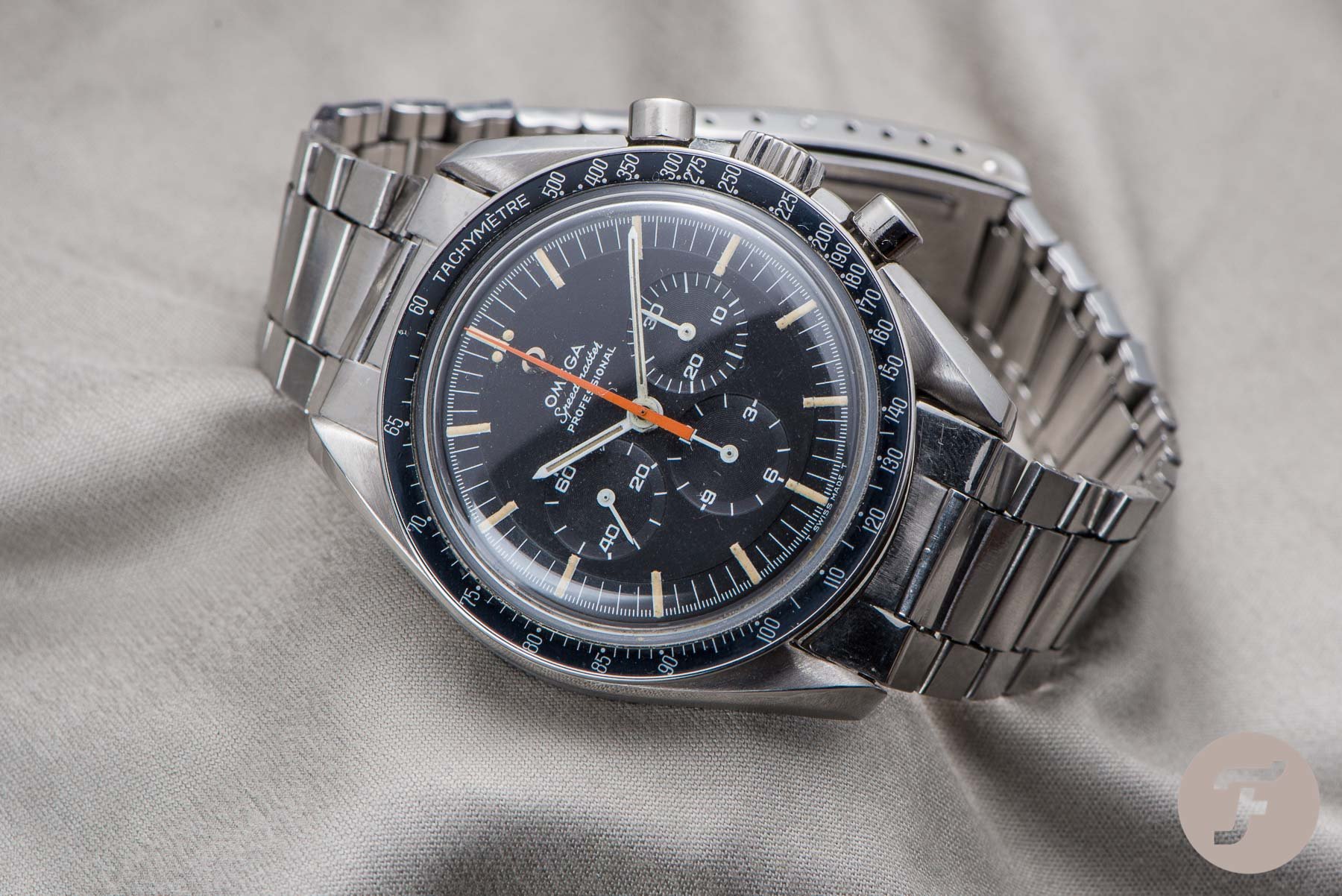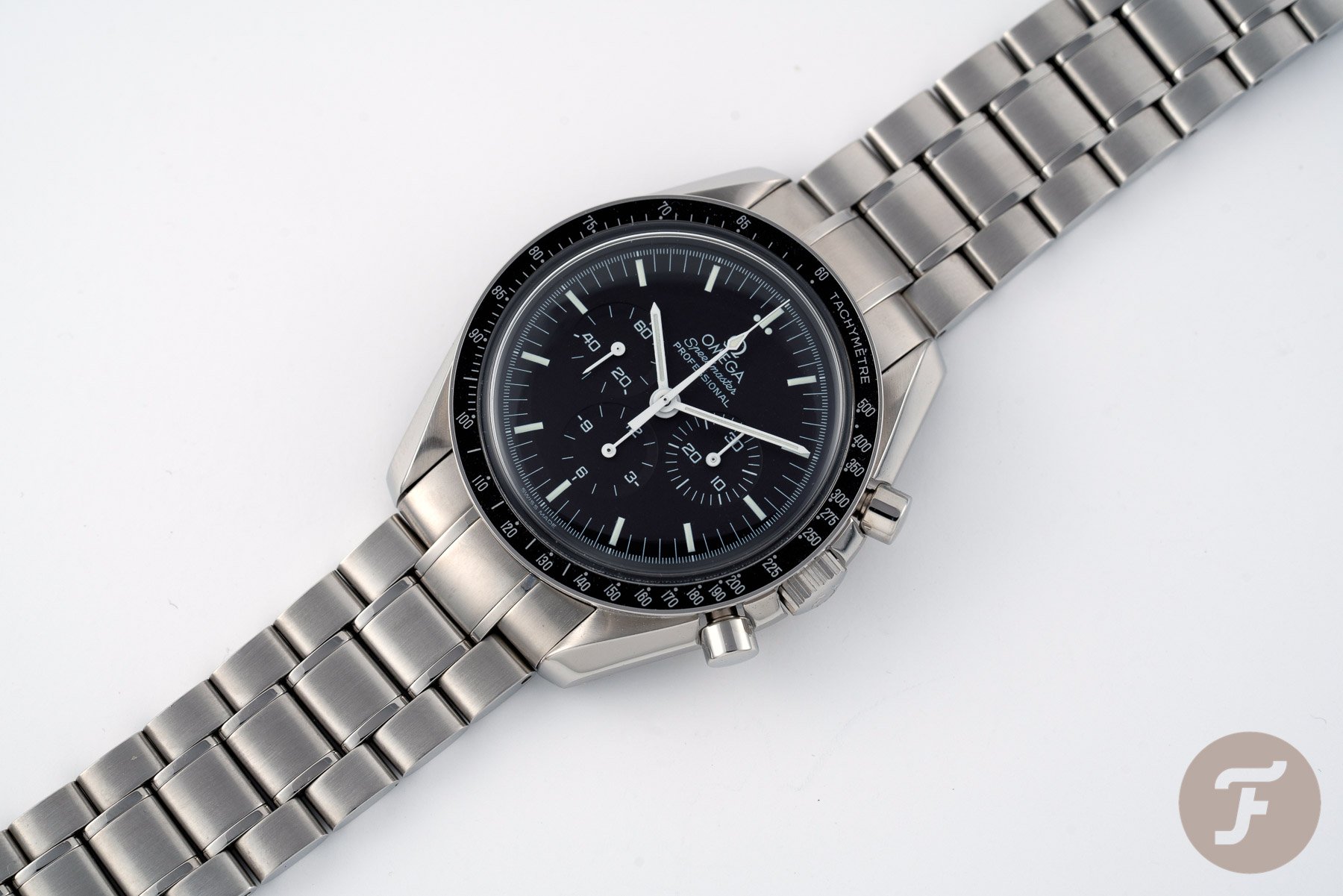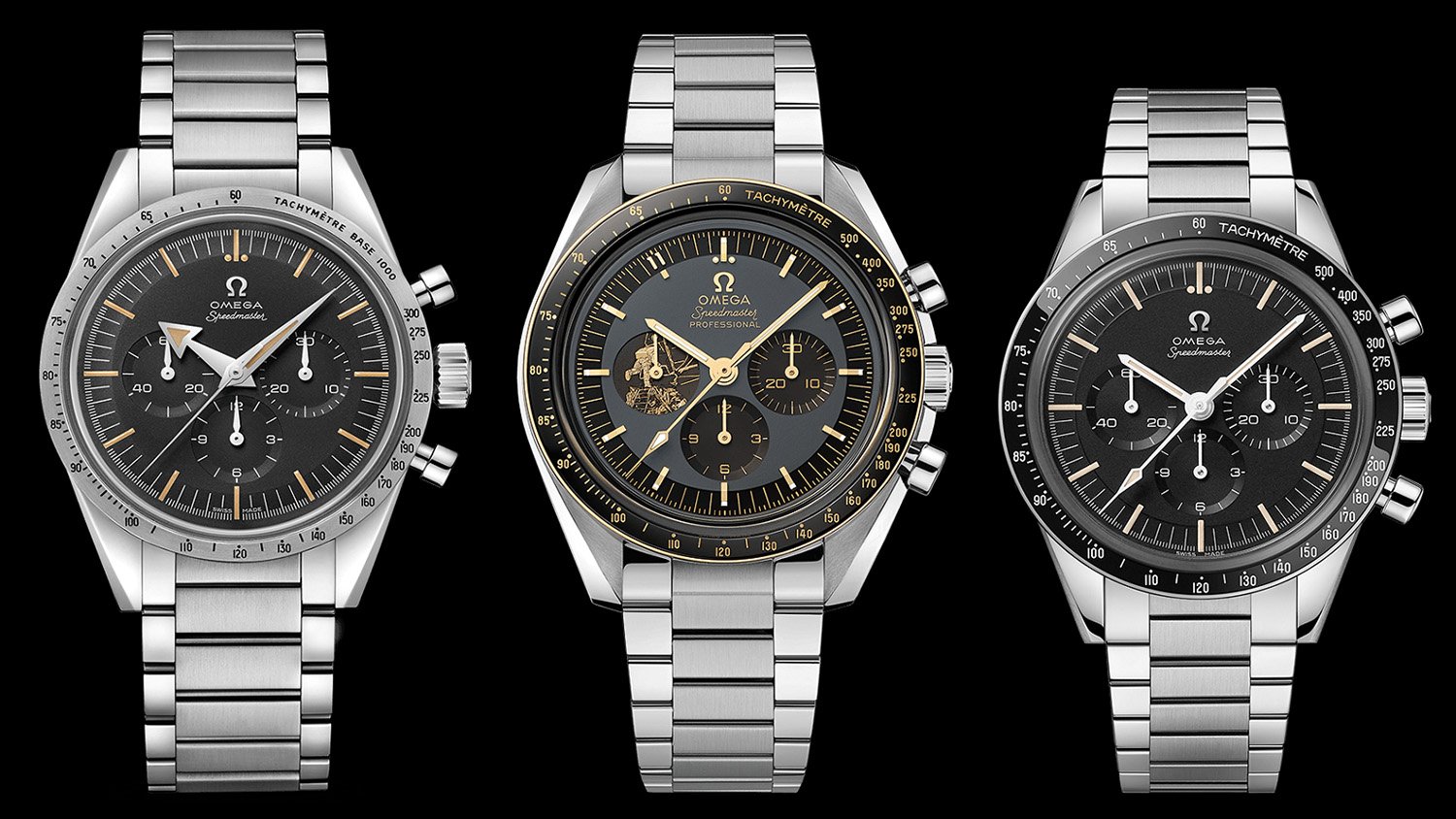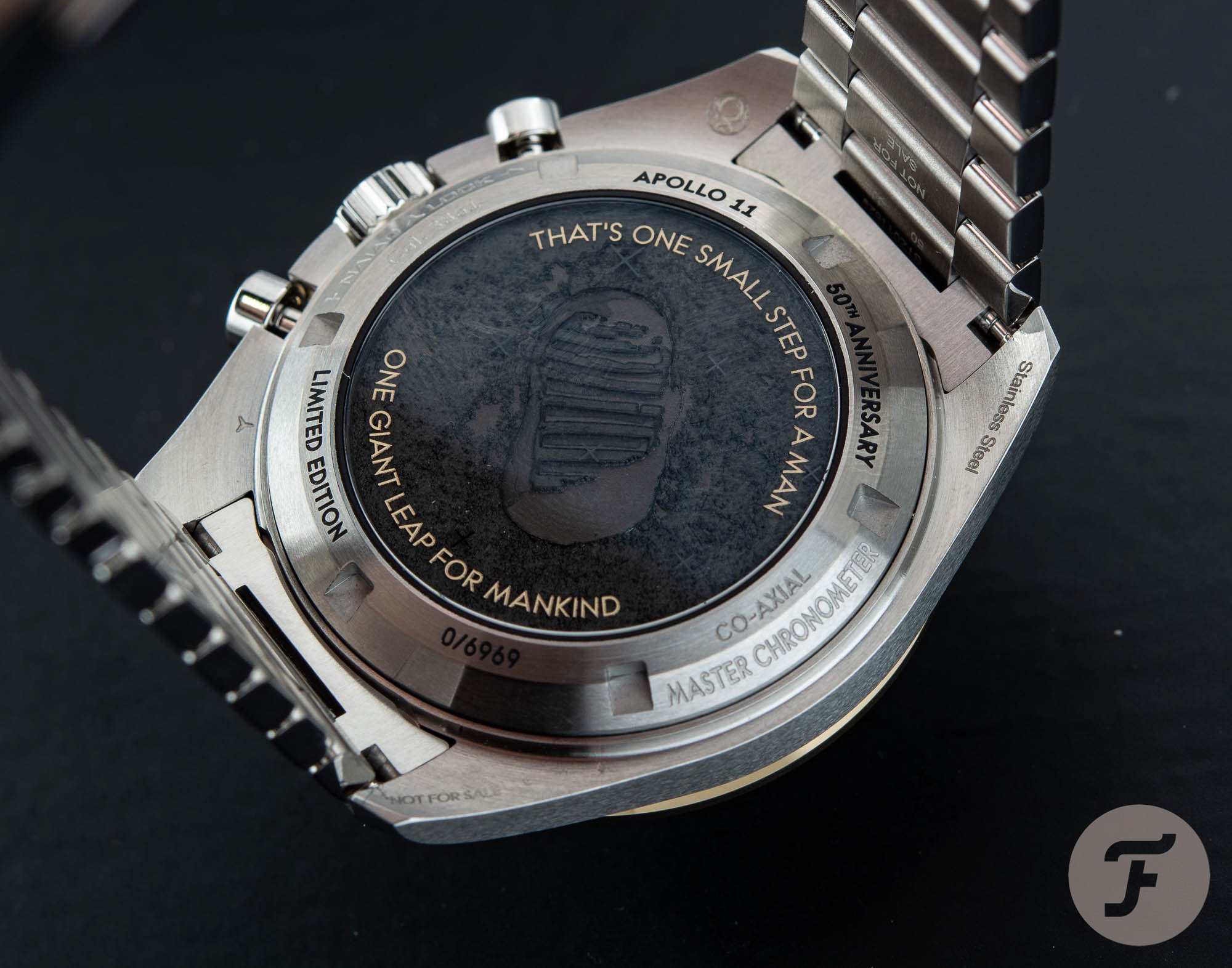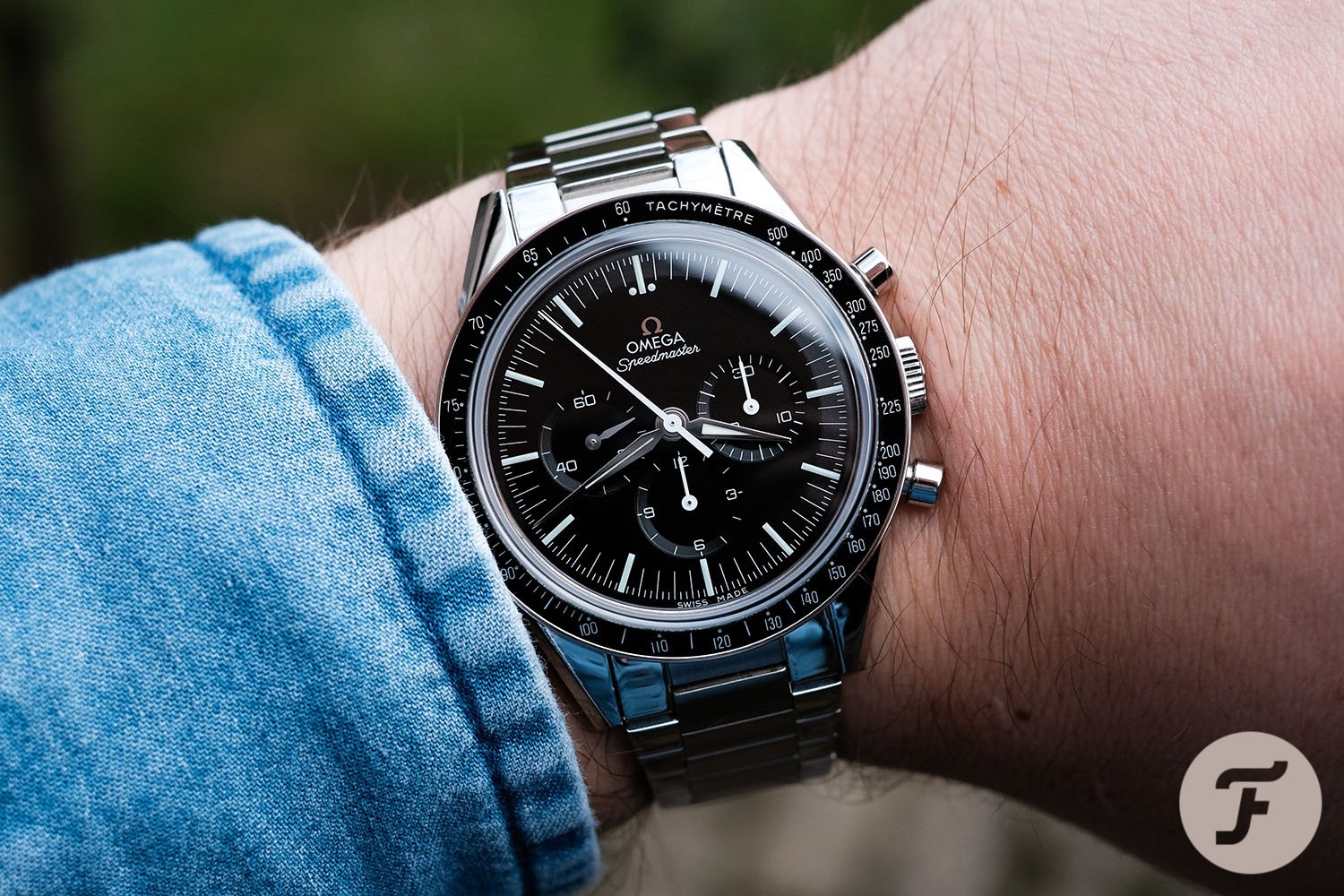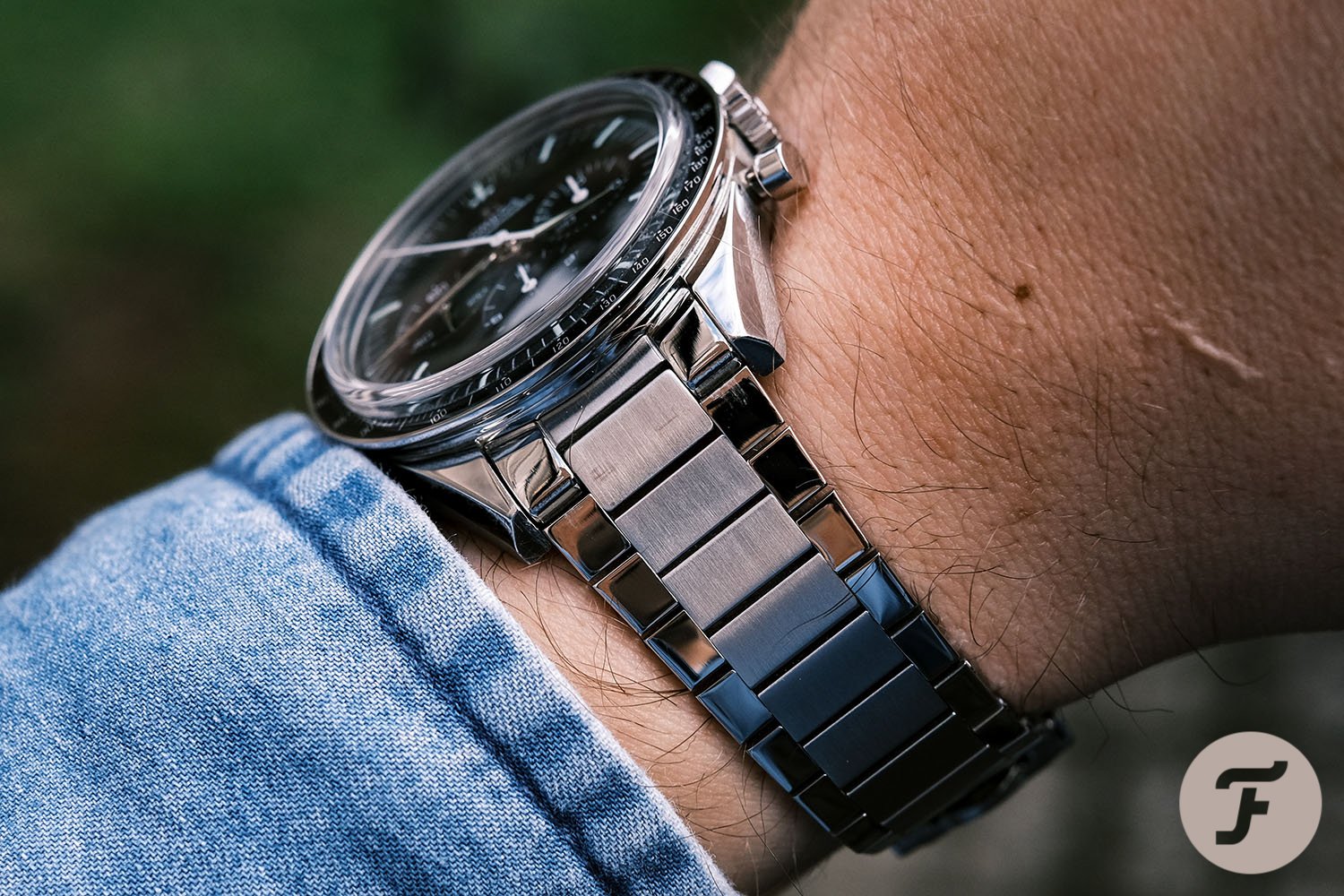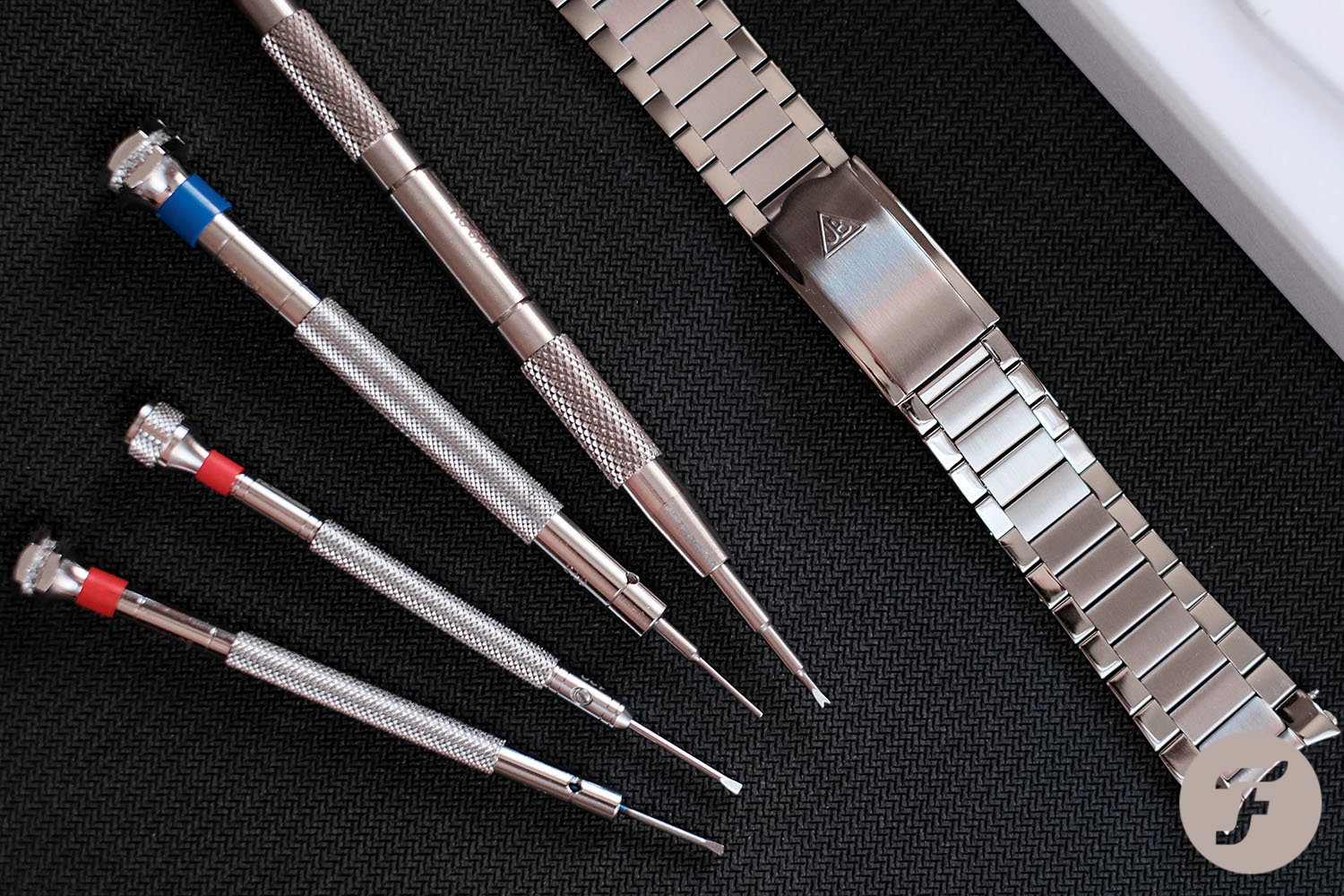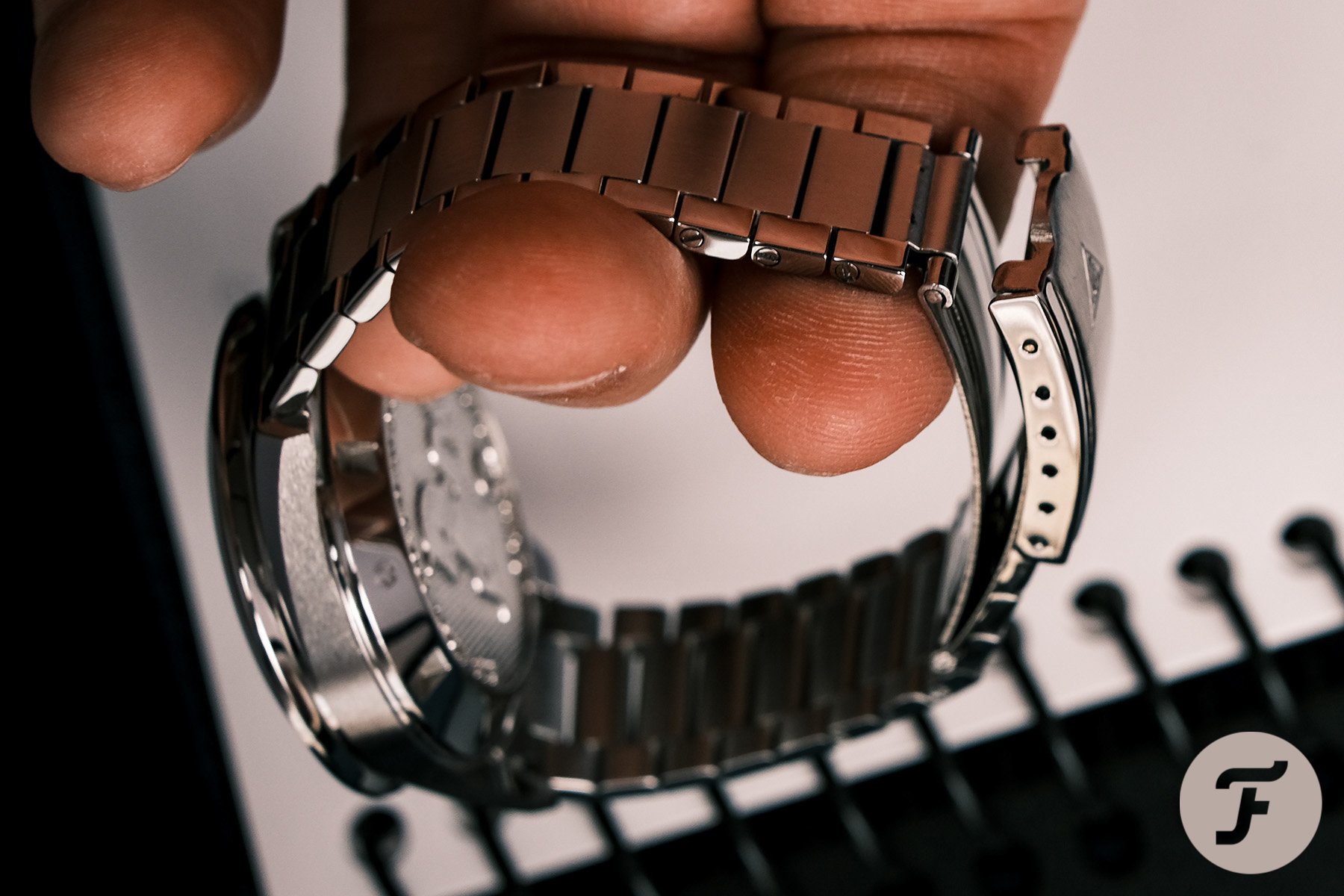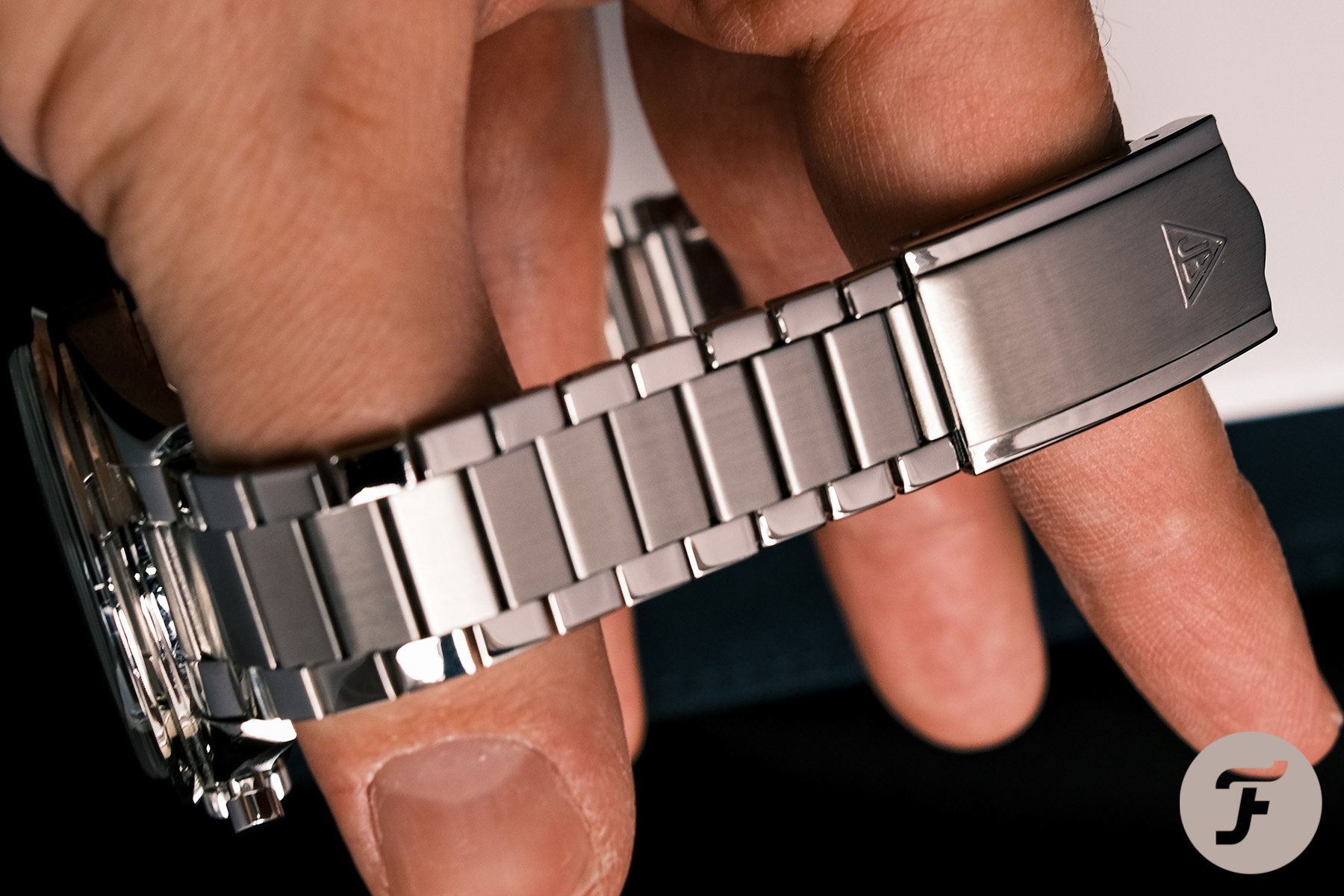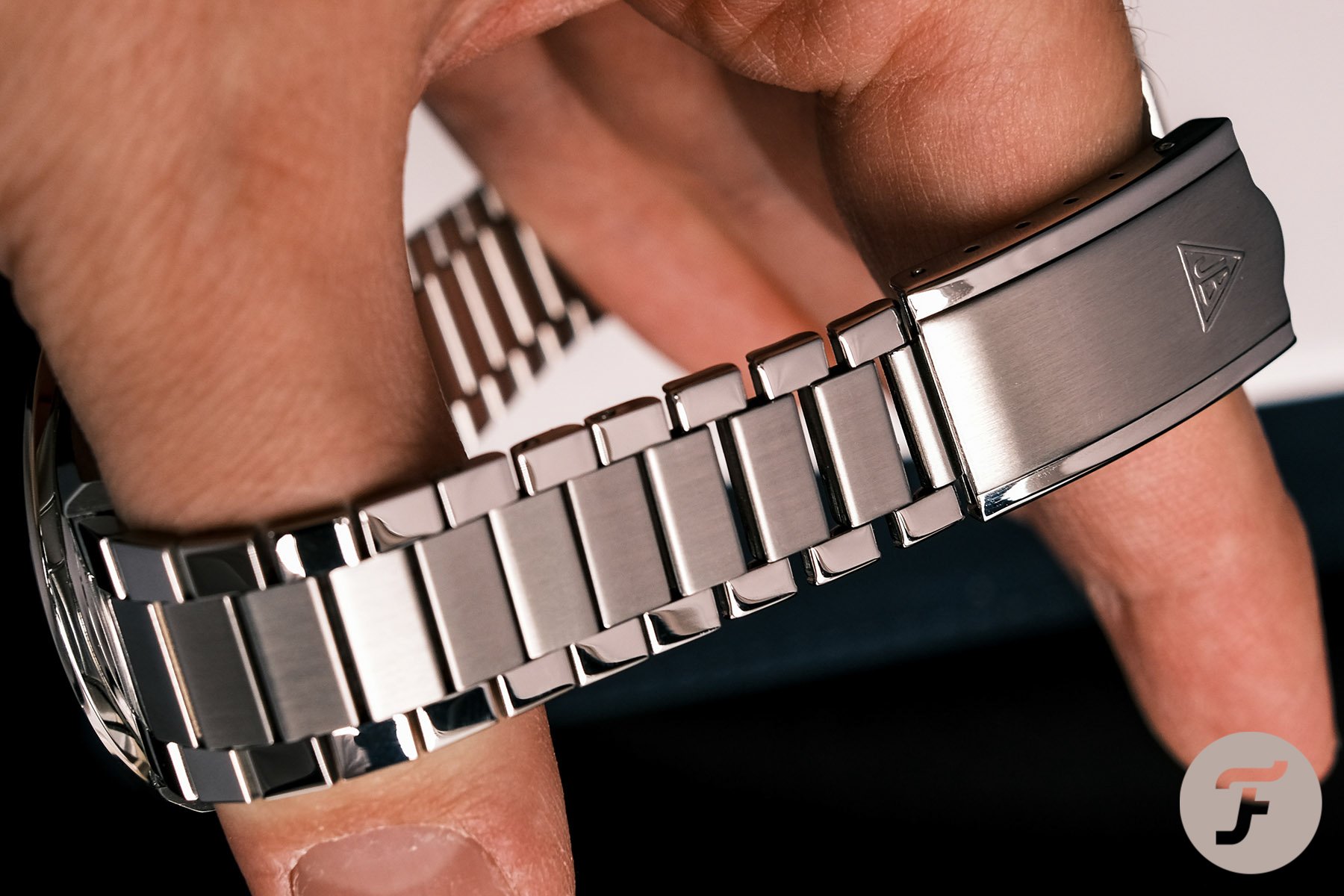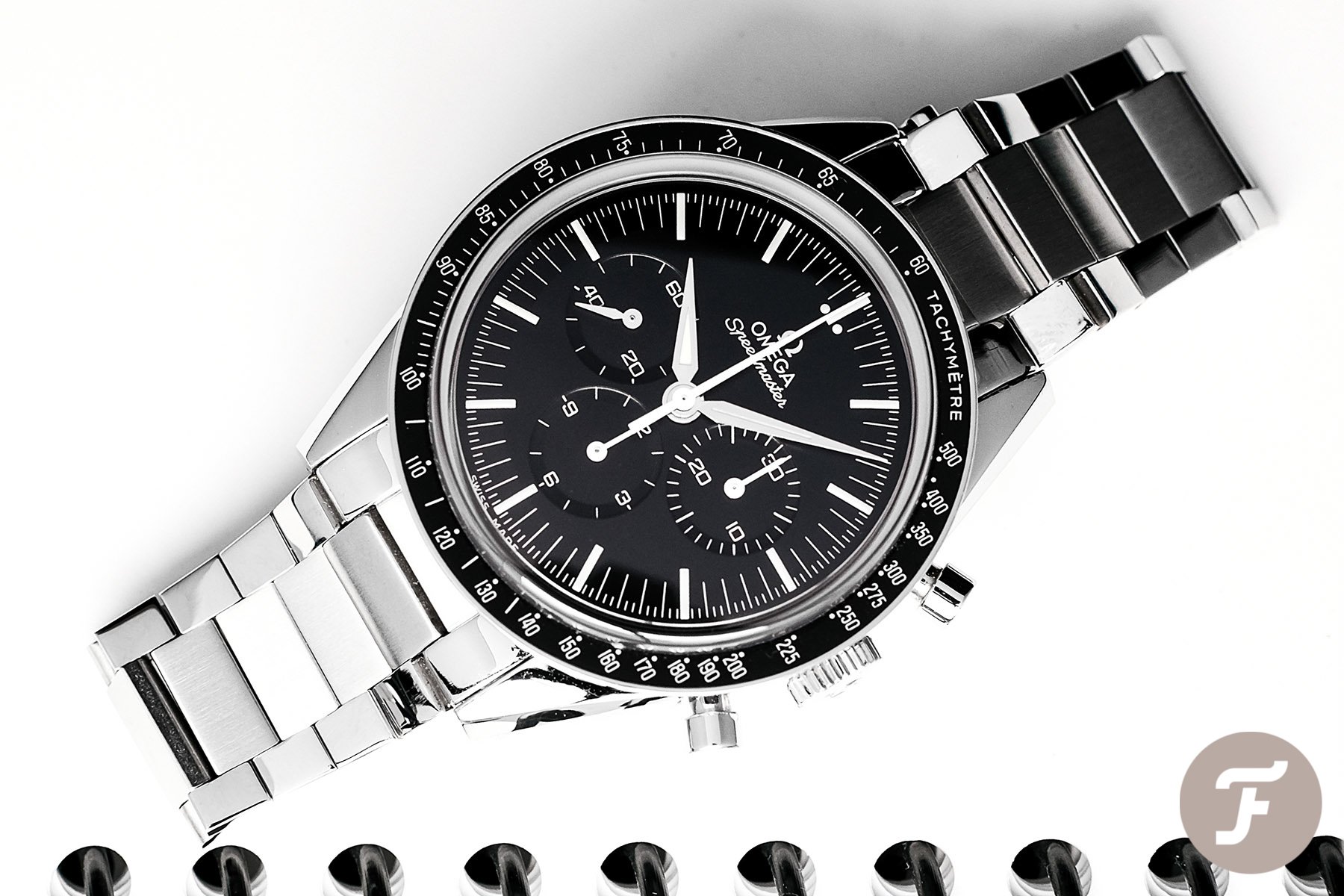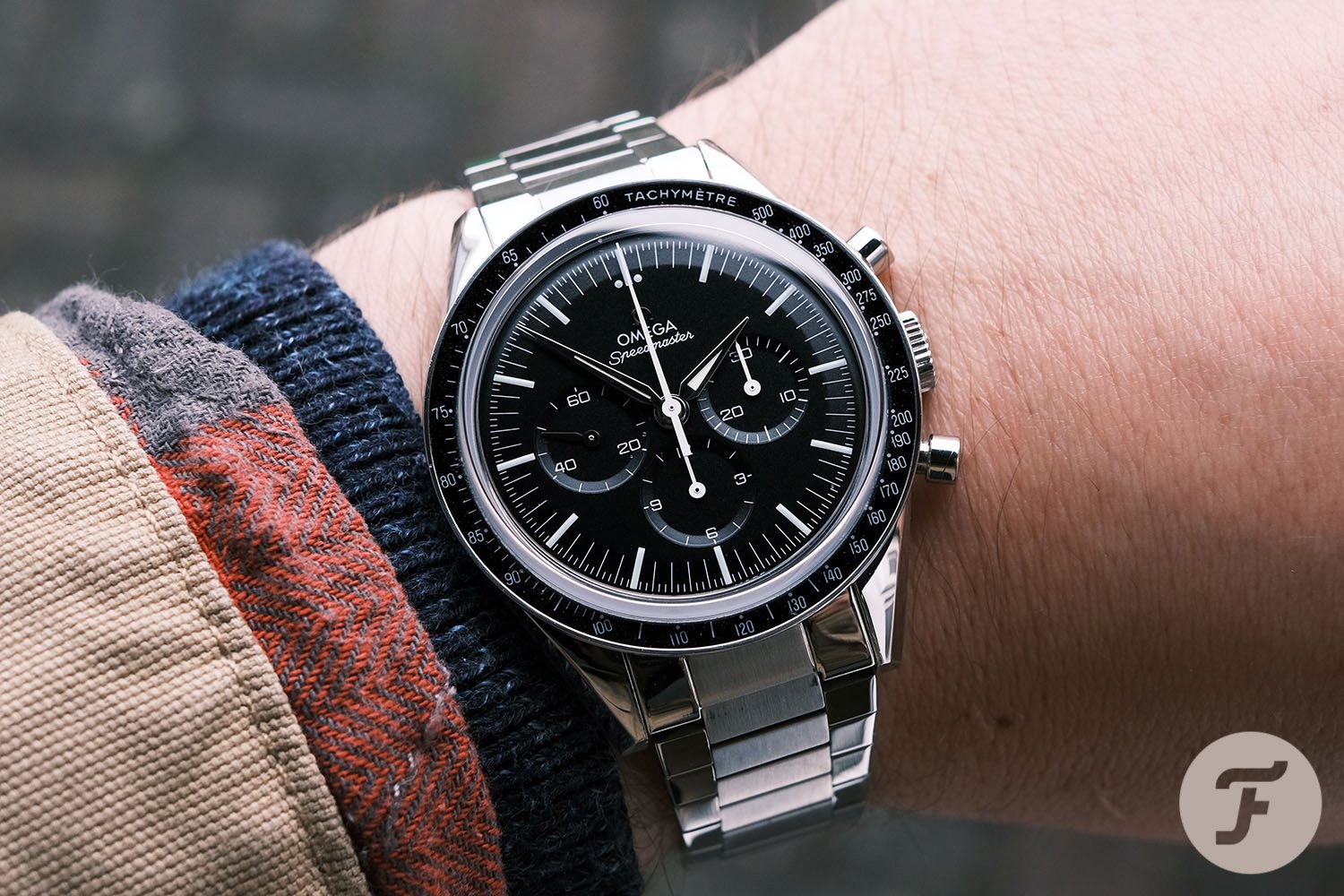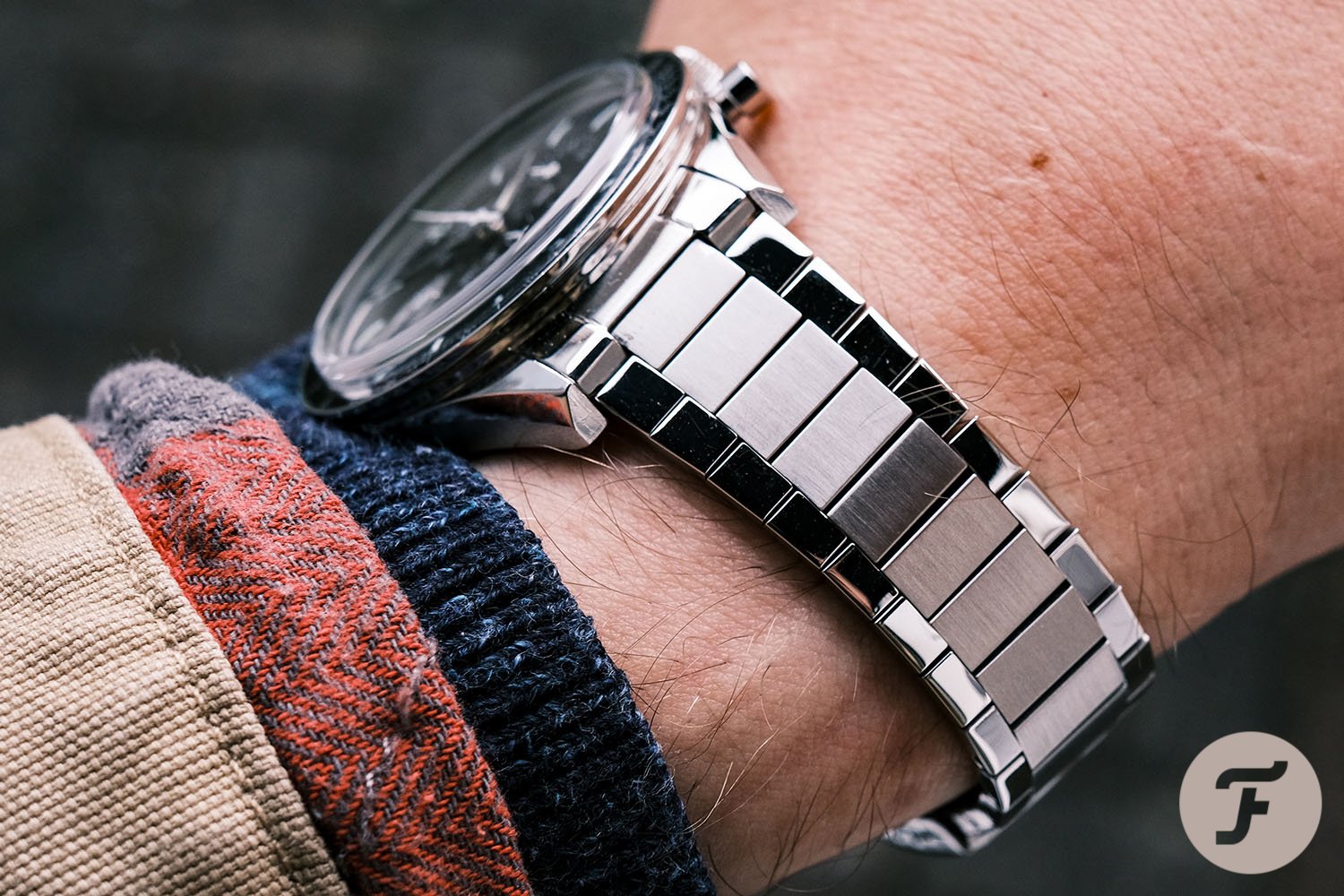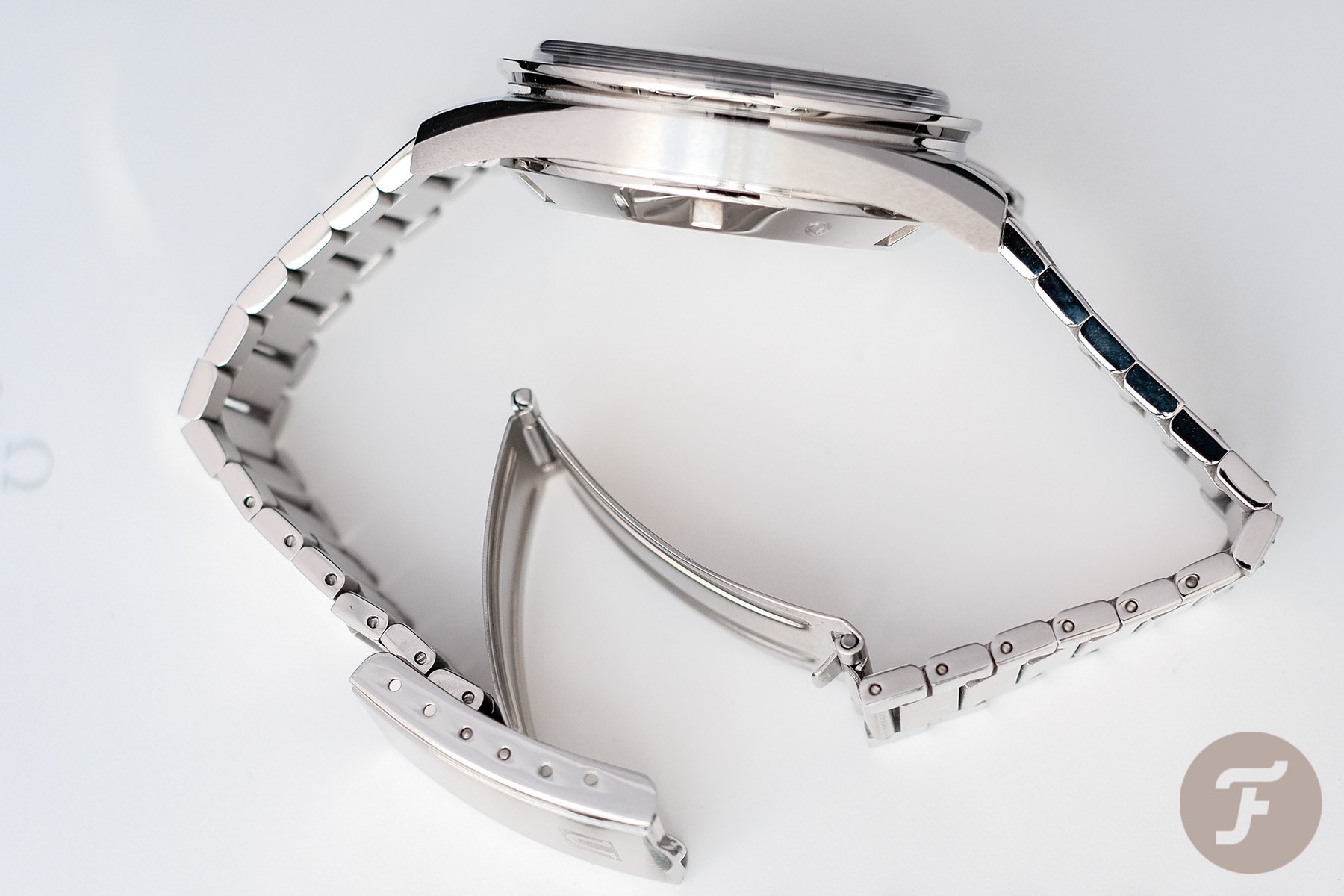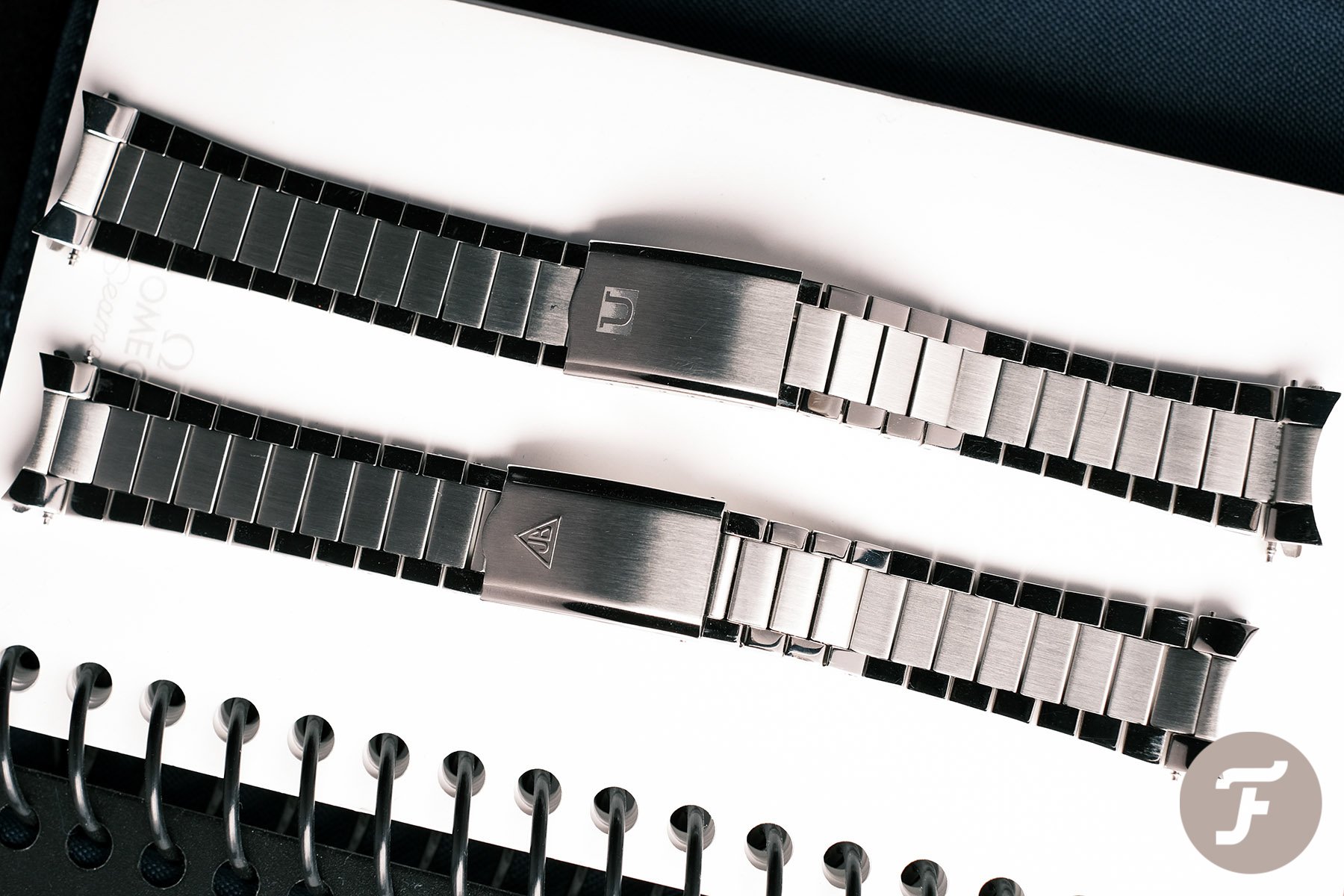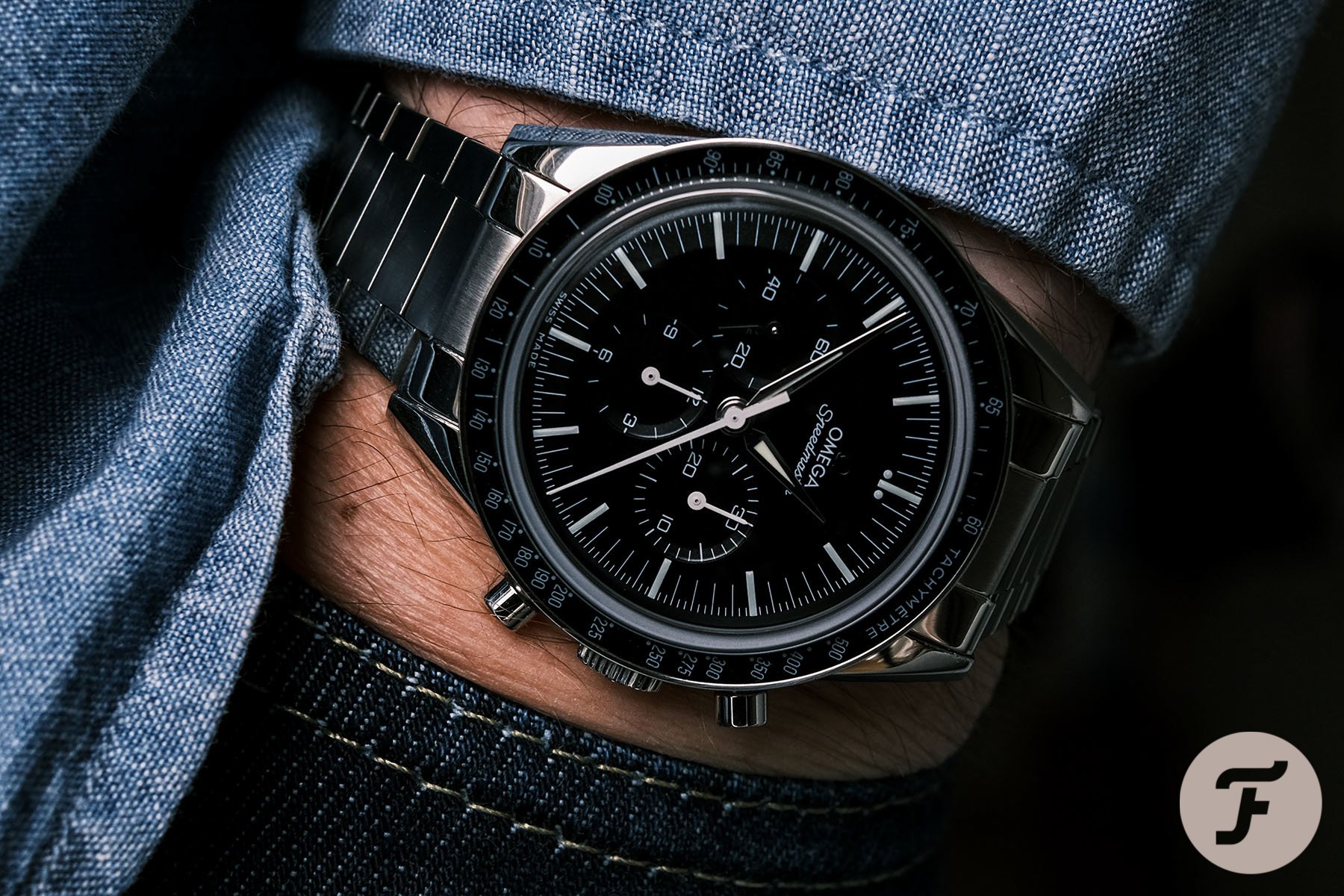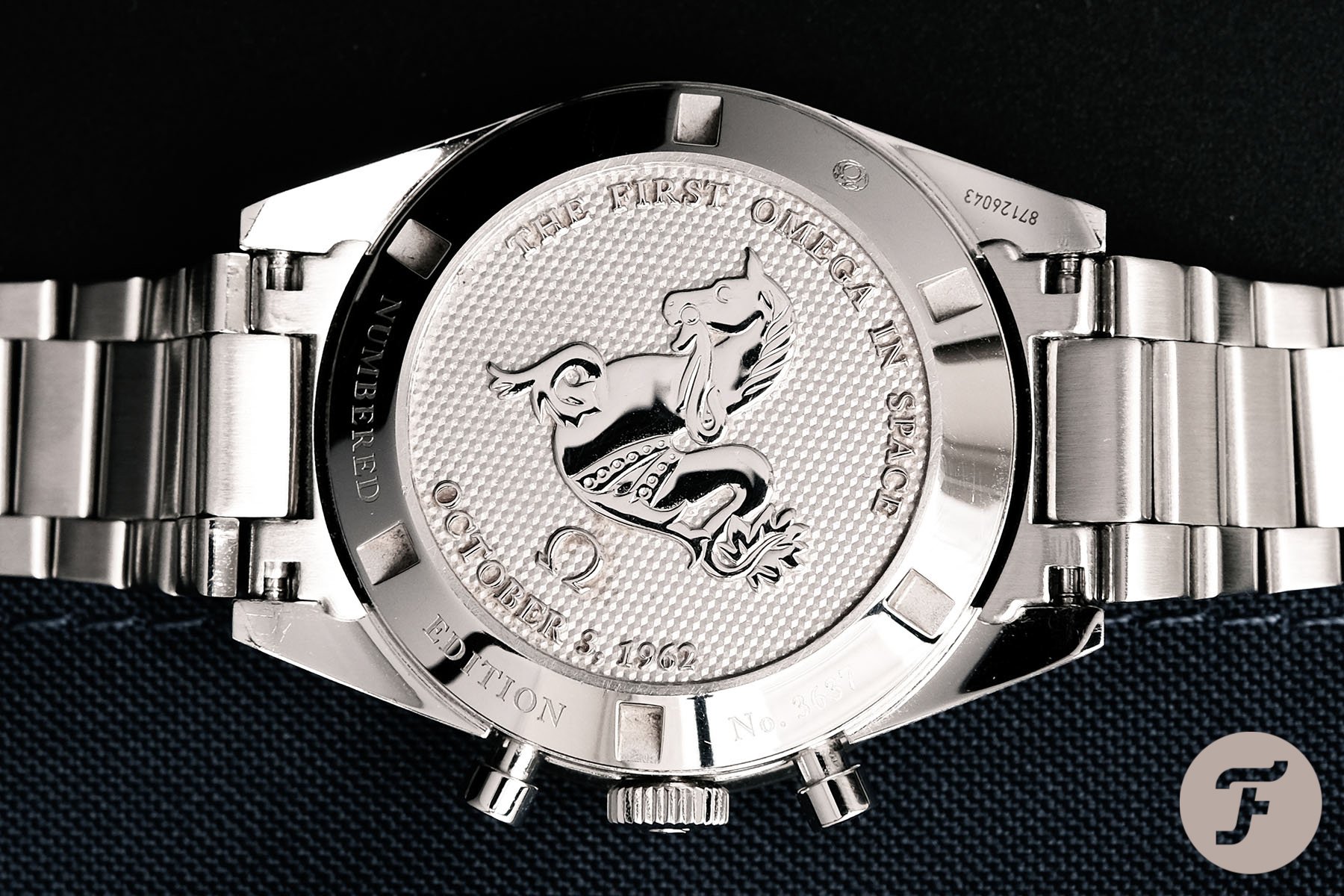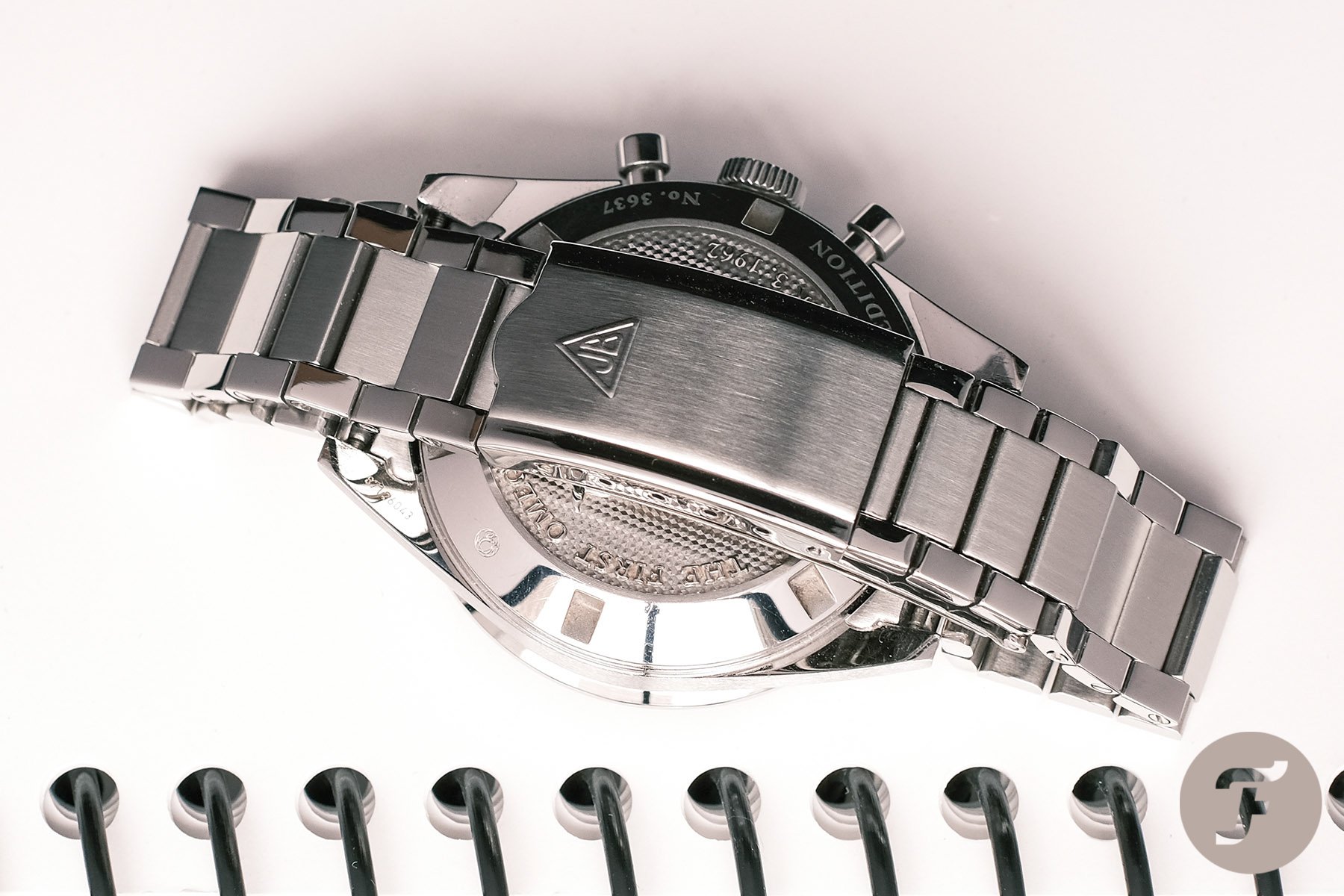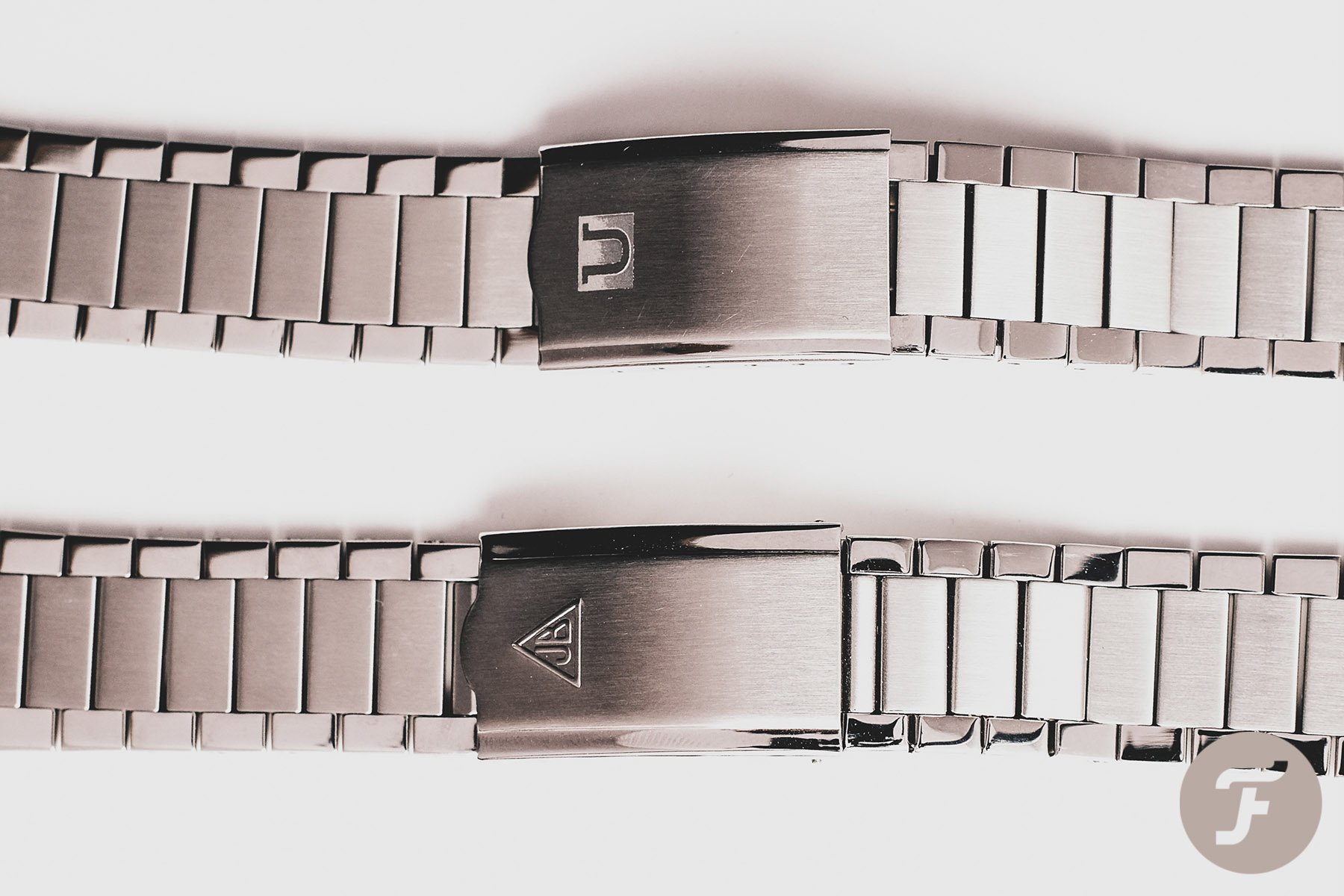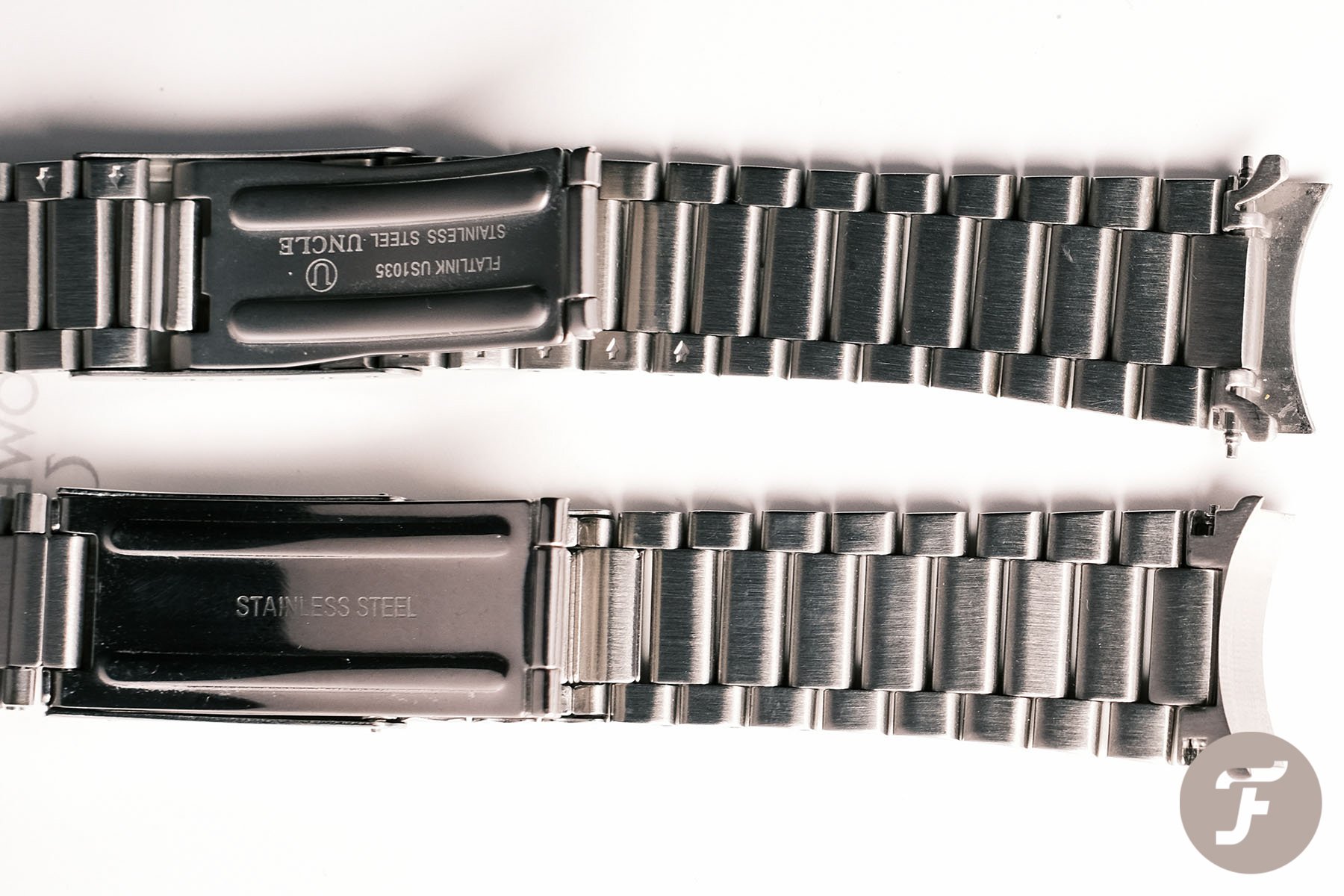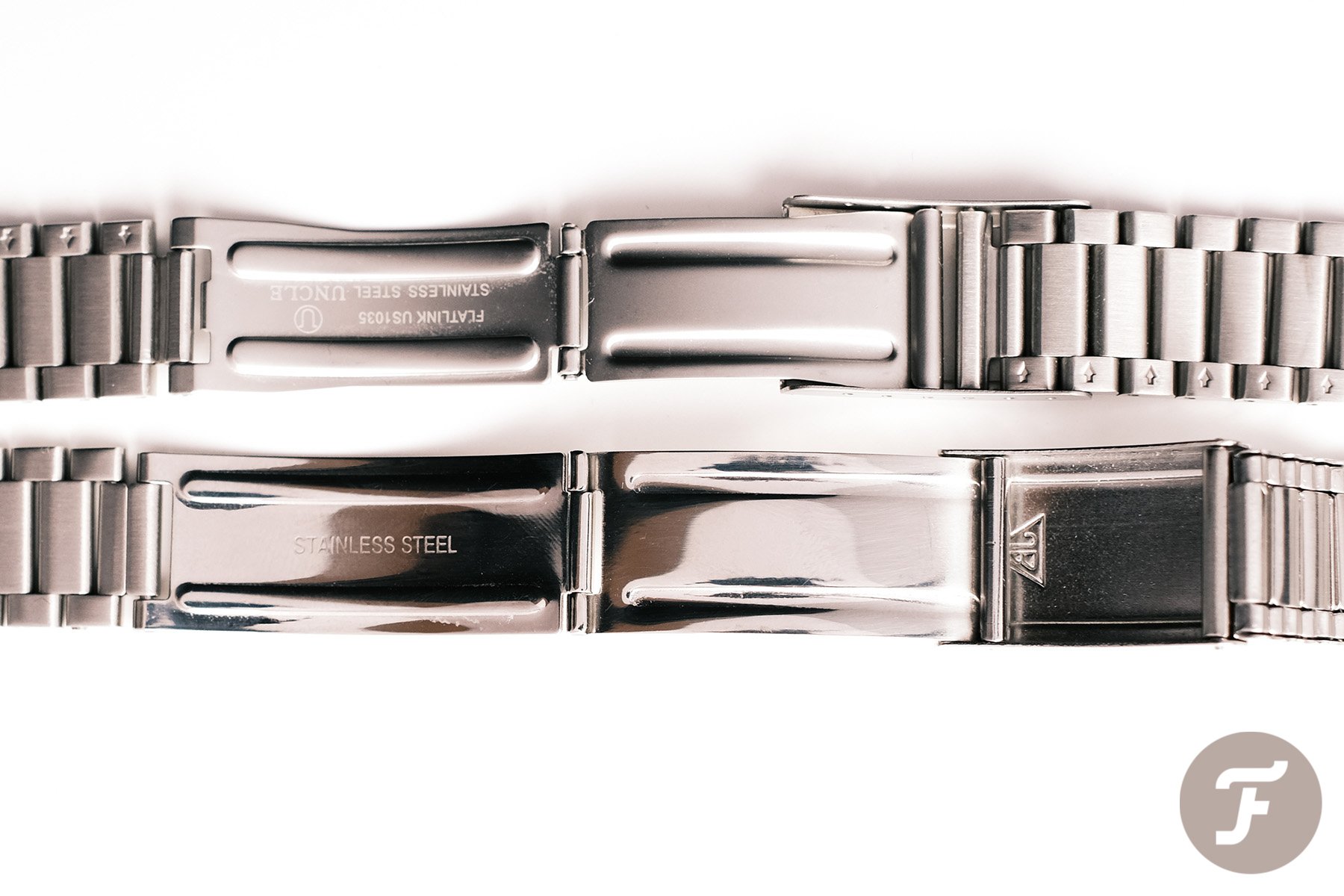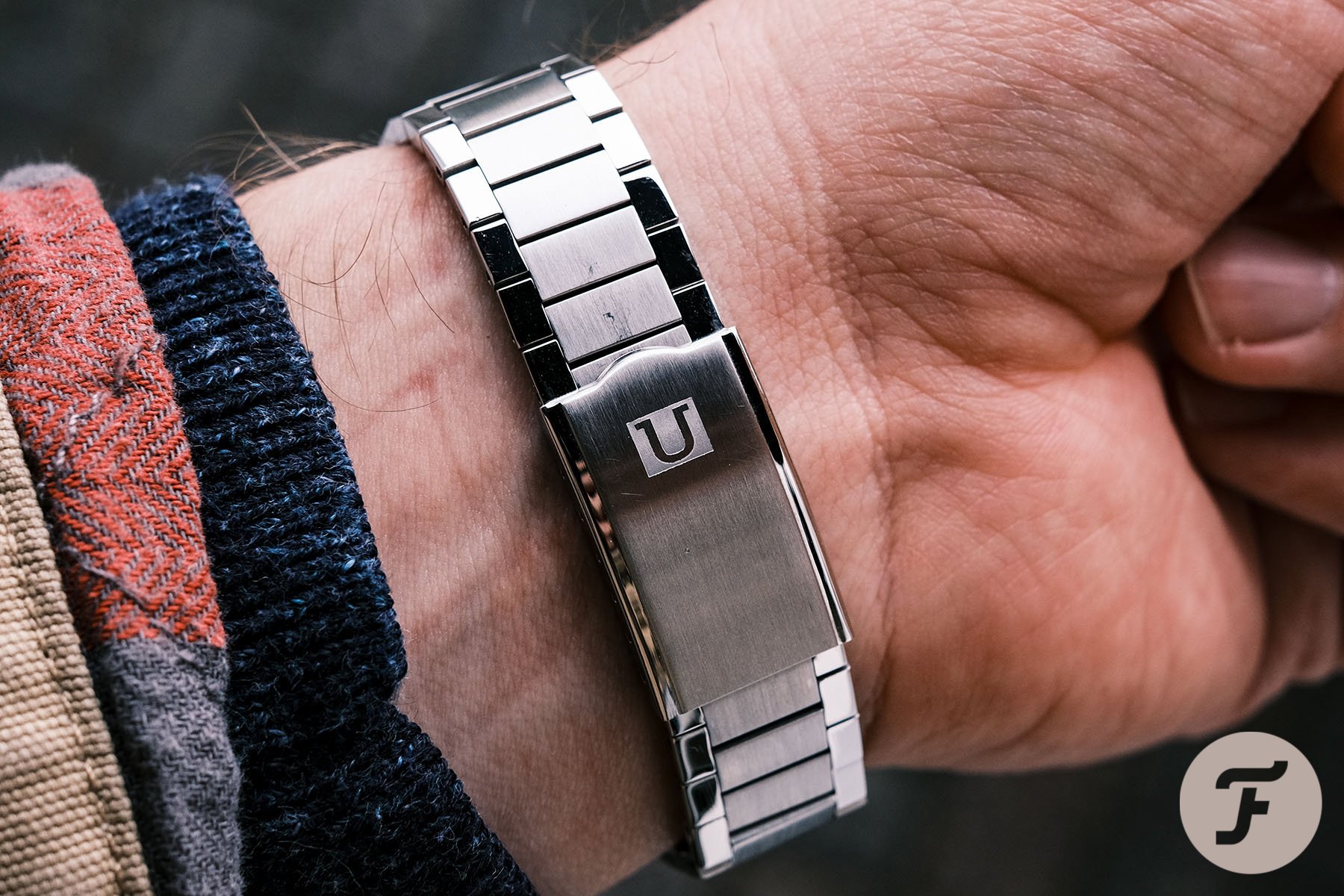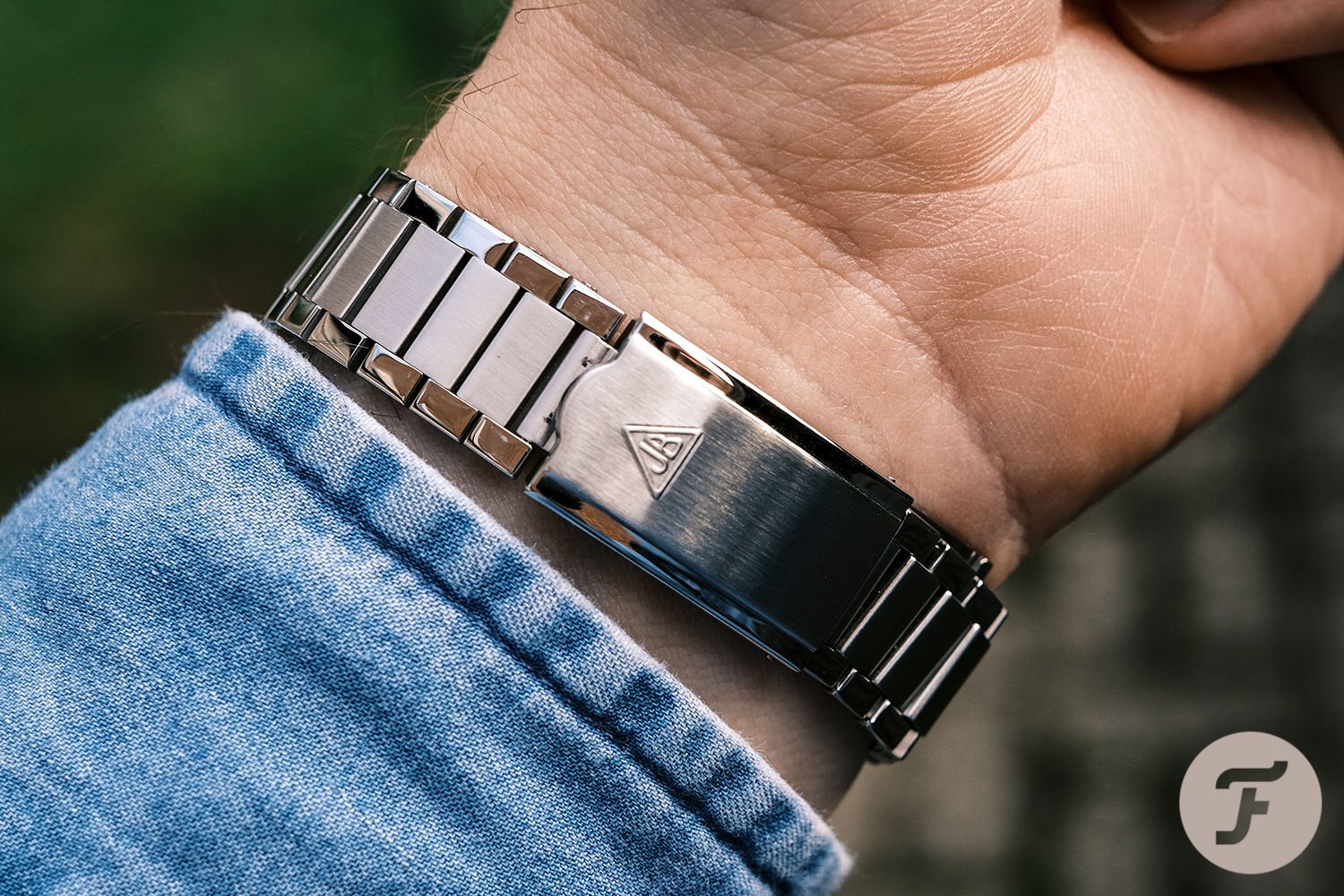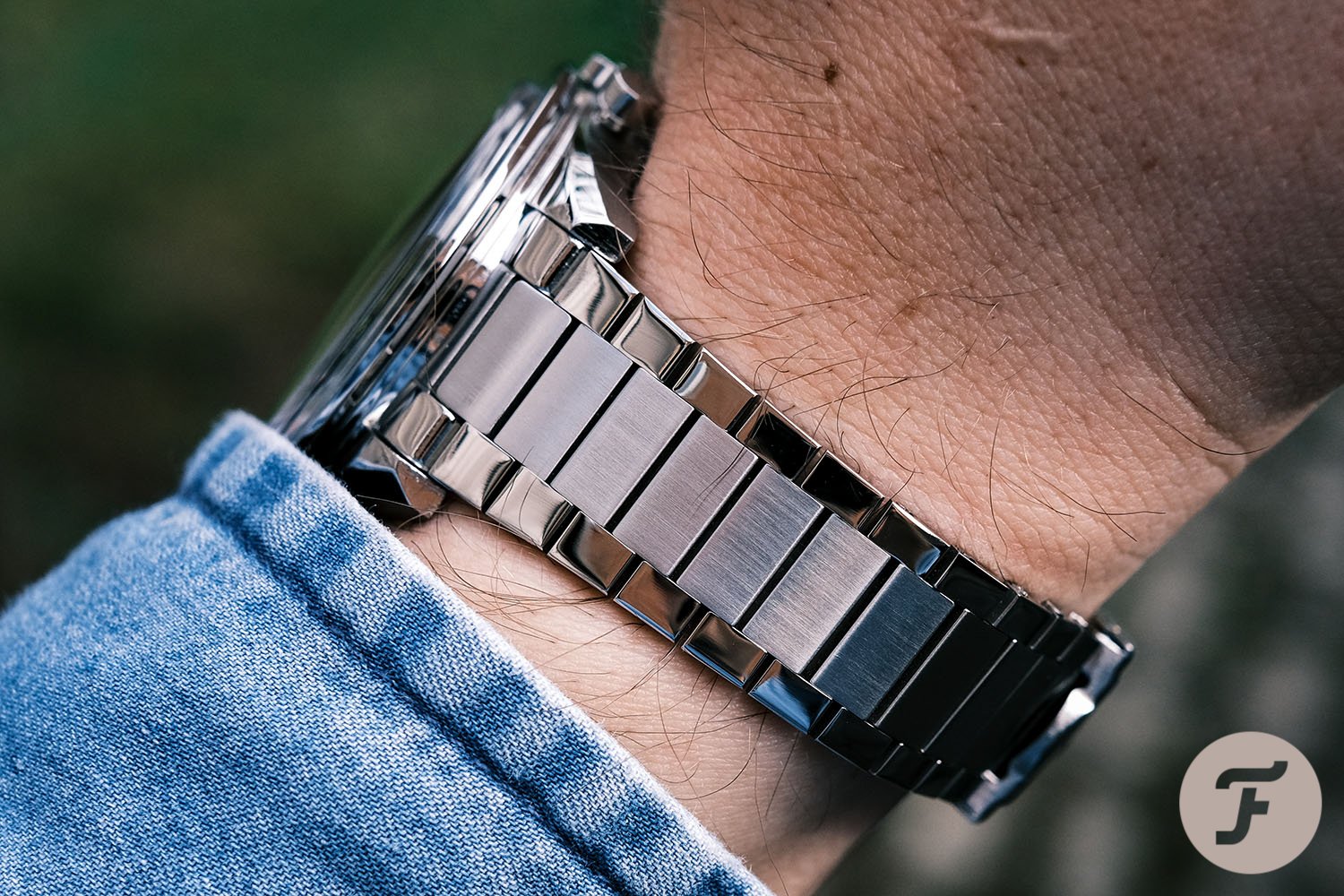#TBT: Forstner Vs. Uncle Seiko Flat-Link For The Speedmaster
Ain’t it funny when things coalesce? Take for instance, Armageddon coming out in the same year as Deep Impact in 1998. Two big-budget asteroid disaster movies from separate studios releasing within months of each other. While I’m bringing it down to a much smaller scale, 2020 also saw another conceptual overlap. The vintage flat-link bracelet design for the Omega Speedmaster. The conceptors? Forstner and Uncle Seiko.
Before I go into more detail on both these bracelets, let me explain a bit of backstory on the flat-link. The three-link construction with flat surface on the outer side of each link is a design both brands pay heavy homage to from the past. None more so overtly than the reference 1039 bracelet from Omega.
The flat-link bracelet inspiration
Balázs went into a lot more detail here on the many flat-link bracelets from Omega. But, the 1039 is the most ubiquitous of the flat-links from the early days of the Speedmaster. Therefore, I feel it clearly inspired the new bracelets from Forstner and Uncle Seiko. So why is this design ripe for revival? Perhaps a few reasons, but to put it simply — scarcity, throwback style, and vintage charm with modern production.
The expandable links of the original 1039 (1966 to 1972) were prone to damage from continuous use. Over time, these links would deteriorate, requiring replacement or scrapping. Even surviving bracelets don’t stand up to modern sensibilities and are notorious hair-pullers. But the flat-link never went out of style. The reference 1171 that overlapped the 1039 had a longer lifespan (1968–1980), but already this design moved towards rounded links.
The modern Speedmaster Professional Moonwatch comes with a rounded three-link bracelet with polished outer edges on the center links. This watch and bracelet pairing has been around for many years — so much so, that it’s hard to think of the Speedy Pro without it now. And even though the look has become the status quo, for me, it has never been my favorite bracelet design. Build and quality-wise, it is fantastic and much better than the earlier bracelets. But for whatever reason, the look lacks a bit of pizzazz.
I do not see the same sense of bracelet aversion from Daytona owners that I see in the Speedy community.
I cannot be the only one that shares this sentiment. Just by taking a look at the cornucopia of OEM and after-market strap options that are targeted at the Speedy. Yes, owners joyfully freshen the look of their Speedy with a new strap — it is a Strap Monster after all. But I do not see the same sense of bracelet aversion from Daytona owners, for example, that I see in the Speedy community.
Modern Omega Flat-link bracelets
Omega itself reintroduced the flat-link in different styles starting with the 60th Anniversary in 2017. However, the 19mm links in the bracelet did not taper and had a reasonably hefty clasp relative to the case. The 50th Anniversary Apollo XI also had the flat-link bracelet to fit 20mm lug width for the Professional case. In my view, this tapered flat-link with polished outer links was much nicer. The catch? Initially, the Apollo XI bracelet wasn’t available for purchase separately — unless as a replacement.
Even then, the connection to the underside differed from the standard Moonwatch. Therefore, easily swapping out the classic bracelet with the Apollo XI flat-link was not an option. I understand that the new Apollo XIII Snoopy does have a similar underside lip to the Apollo XI, so could, in theory, be paired with this flat-link bracelet. But as I have yet to go hands-on with Silver Snoopy 3, an Omega Authorized Dealer is better placed to confirm this. Most recently, the flat-link appeared again on the Calibre 321, aka “Ed White”, but with a 19mm end link, so 1mm shy of the Moonwatch.
Even if you can source one of these official Omega flat-link bracelets, the price would invariably land somewhere between $500 and $1,000 — hence why there is an open goal for brands to put the flat-link style in the back of the net.
Forstner Flat-link — $150
We are big fans of Forstner at Fratello. Ever since the vintage recreation of the “JB” Komfit bracelet, the Fratelli has been enamored of its creations. The mesh construction of the Komfit bracelet replicates the same design favored by NASA astronauts for their Omega Speedmasters in the ’60s. The American company then laid dormant for a few decades before triumphantly returning last year. Since then, we have also seen the “Klip” bracelet brought back to life, something that excited Tomas, particularly.
The target was to pay tribute to the flat-links fitted to early Speedys.
So far, the revived Forstner has been dedicating its past. The Komfit bracelet may have naturally found its way on Speedmasters. But the Klip was perfect for any classic timepiece, vintage or otherwise. When Forstner began teasing the flat-link, it was clear the target was to pay tribute to the flat-links fitted to early Speedys — thereby reducing the available watches to just the Speedmaster Professional with 20mm lugs and “First Omega in Space” with 19mm lugs.
Revival of a classic
I followed the announcements of the Forstner flat-link with bated breath since the early teasers. Finally, in September 2020, the bracelet design came to fruition. With curved solid end-links, the Forstner bracelet is not for mixing and matching with multiple watches. My order was the 19mm end-link version specifically for the “First Omega in Space”. But I have seen others pair this version with the 60th Anniversary, which similarly has the same lug width. I cannot attest to the wearability on the 60th Anniversary and would always execute caution in fitting bracelets to watches for which they’re not intended.
Tools for the job
Right out of the box, it was apparent the bracelet length needed adjustment. After a few seconds of studying the link construction, I reached for my trusty 1.0mm flat-head screwdriver. A few turns later, it became obvious I was not making any traction with the turns. A few more seconds checking the links exposed where I was going wrong. The links have a double-lock screw system instead of having an anchor on one side. Therefore, the technique was to hold one flat-head screwdriver in place on one side and turn from the other. I understand this system was for security reasons. It also prolongs the life of each link by putting the strain on the screws and not the links.
However, the double screw system is not exactly user-friendly. After a few links I got to grips with it, but only with a lot of care and patience — I would not recommend changing the links under time pressures. I am not one for instruction manuals, but I found the tips on the Forstner website invaluable. One direction I would add is to separate the clasp with a spring bar tool before attaching the end-links to the lugs of the watch.
Forstner flexing
The clasp itself has five holes for quick adjustment without removing links. You may be looking at the side view of the clasp above and questioning my addition skills. Well, there is a reason for the spacing of the sixth hole. While you can remove it from the clasp with a spring bar tool, the placement is necessary for locking in the clip. Moving it to any other position will not allow the bracelet to fully close. You can move the other side of the bracelet to any of the subsequent holes. But with the links removed, I found the outermost position was the sweet spot.
This side of the bracelet also has three expendable links that flex with the movement of the wrist. Once sized appropriately, and all links secured, the Forstner was ready to wear. My first impressions felt the folding element of the clasp, perhaps over-extended, and had a vintage lightness to it. Ten hours later, the watch was still affixed to my wrist. The realization came in that this was indeed the most comfortable way to wear my “First Omega in Space” in over five years of ownership.
The Forstner could be a bracelet that never leaves the lugs.
While my Speedy has seen plenty of straps come and go, I always found it challenging to settle on a perennial option. Often, I would put the Speedy on the rubber strap from the 40mm automatic Racing model in the summer. Then switch to a leather or suede for the autumn/winter. But the Forstner could be a bracelet that never leaves the lugs. I have to put the reason down to the elasticated links that flex with the wrist and allow a bit of movement without feeling loose. I hope it does not degrade over time like the original 1039s.
Where the Forstner also improves over the inspiration is the solid end-links. It may be a tight fit, requiring more patience, but once connected, it says firmly fixed in place. But a downfall is that the links immediately after the ends tend to fold over and get stuck. This is down to the shaping and machining and is an improvement I would strongly endorse for version 2.0 of the flat-link. It’s not a problem when the watch is on the wrist. But when placing in a watch box or before strapping it on, some effort is required to unfold these links, and I can imagine would start to show unsightly scratch marks on the end-links.
Overall, the quality is decent with each link having a nice sheen in the light, especially with the polished outer links. Let’s see how the Uncle Seiko fares…
Uncle Seiko Flat-link — $89
Admittedly, I was fairly new to Uncle Seiko. The name didn’t necessarily lead me to believe that an Omega-style bracelet was in its catalog. Around the time that Forstner stated teasing the flat-link was when I began to hear of Uncle Seiko’s option. Spear-headed by a part-time Pastor in California, Uncle Seiko, as the name suggests, cut its teeth with after-market Seiko accessories. The choices include straps and bracelets, but as the operation grew, so did the variety in the online offering.
Thank you to @lug_life on Instagram for allowing me to borrow his Uncle Seiko bracelet.
The growing interest in Omega accessories finally led to the reference 1039 recreation by Uncle Seiko in July 2020 — three months before Forstner’s take. As soon as my Forstner bracelet arrived, I had the intent to purchase the Uncle Seiko for comparison. Unfortunately, by that time, the Uncle Seiko bracelet had sold out. Specifically, the polished/brushed version for the 19mm Speedy. Reaching out to Watch On Your Wrist contender Nathan, aka @lug_life, he allowed me to borrow his Uncle Seiko in the configuration I needed for the comparison.
Sense of mass
Out of the box, I certainly felt a difference in mass with each of the links against the Forstner. The Uncle Seiko felt more substantial with much better articulation with the links near the ends. There was also slightly better finishing on the underside of the links, again something the Forstner could improve on for v2.0. I did not compare the measured weight of each bracelet as the Uncle Seiko had an additional link to compensate for the lack of any stretchy links. But by feeling each one in hand and on the wrist, the Uncle Seiko certainly felt the least “vintage”.
There is a noticeable step down from the end-links to the bracelet.
I mentioned the better articulation on the Uncle Seiko. This could be because this flat-link opted for authentic hollow end-links that fold over themselves rather than solid links. It made it a breeze to fix it to the lugs and did offer that extra freedom of movement. It came with one disadvantage as there is a noticeable step down from the end-links to the bracelet. Whereas the Forstner has a nice curvature all the way to the clasp.
Locking in
Likewise, the Uncle Seiko has adjustable spring bar holes on the clasp to allow further refinement of sizing. Though, what you get is a clasp that locks in place no matter where the spring bar is placed. That certainly is an advantage if you aim to ensure the clasp sits dead center on the wrist. Another contrasting element is the pin and collar fixture within the links that make the Uncle Seiko far more mainstream-friendly in removing and adding links. Although, I would argue the life span of the links themselves, and later security, as this system tends to wear away metal.
There were no cases of hair and skin pulling, but there were times it slid forward and back in a noticeable way.
Without the stretchy links, I had to size the bracelet just a bit looser to allow my wrist to breathe when it naturally expands with gentle exercise or temperatures. When cooler, the looseness of the bracelet became more evident and led to times that I had to take it off to give my wrist a break. There were no cases of hair and skin pulling, but times when it slid forward and back in a noticeable way. But as soon as I was walking, it stayed in place and would be even more uncomfortable if it was too tight. The expanding links are something I wish the Uncle Seiko revived from the reference 1039 bracelet that we saw with the Forstner.
Verdict
Even though the Forstner has a bit more prestige, I decided to take branding out of the comparison. Seeing as both of these bracelets were not Omega-endorsed, it was not a factor. One thing, I cannot ignore is the price differential. As you may have seen above, the Forstner is $61 dearer than the Uncle Seiko at $150 over $89. It’s quite a gap that, quality-wise, is wider than the products dictate.
However, even for the additional cost, the comfort factor is what hands it to the Forstner over the Uncle Seiko. Those expanding links and solid ends just gave it all-day, everyday wearability that the Uncle Seiko could not compete with. You can also purchase 19mm or 20mm end-links separately for the Forstner for $50 in case you want to switch between the smaller Speedy case or Professional case without needing to buy a whole bracelet.
The Forstner flat-link is my preference over the Uncle Seiko, but which one would be yours? And if you own one or both of the bracelets, what are your pros and cons? Let me know in the comments below.
Be sure to follow @lug_life on Instagram for making this comparison possible. He has a great selection of watches, including his Speedmaster and regularly experiments with excellent strap and bracelet combos.
Be sure to follow me on Instagram too here.

